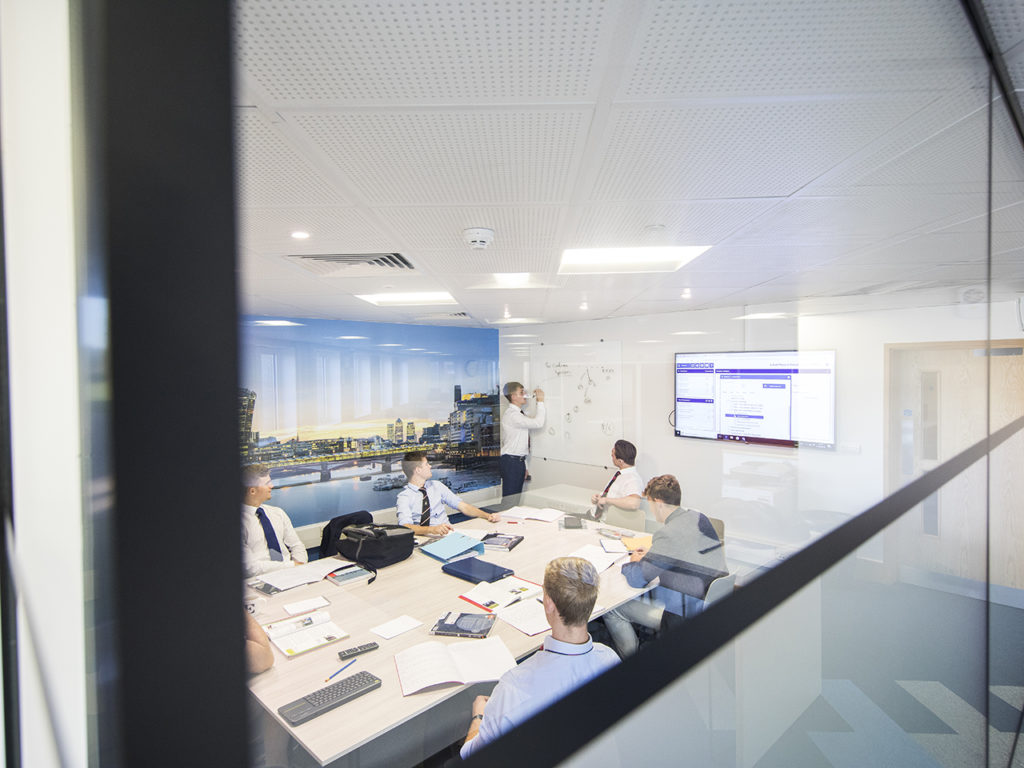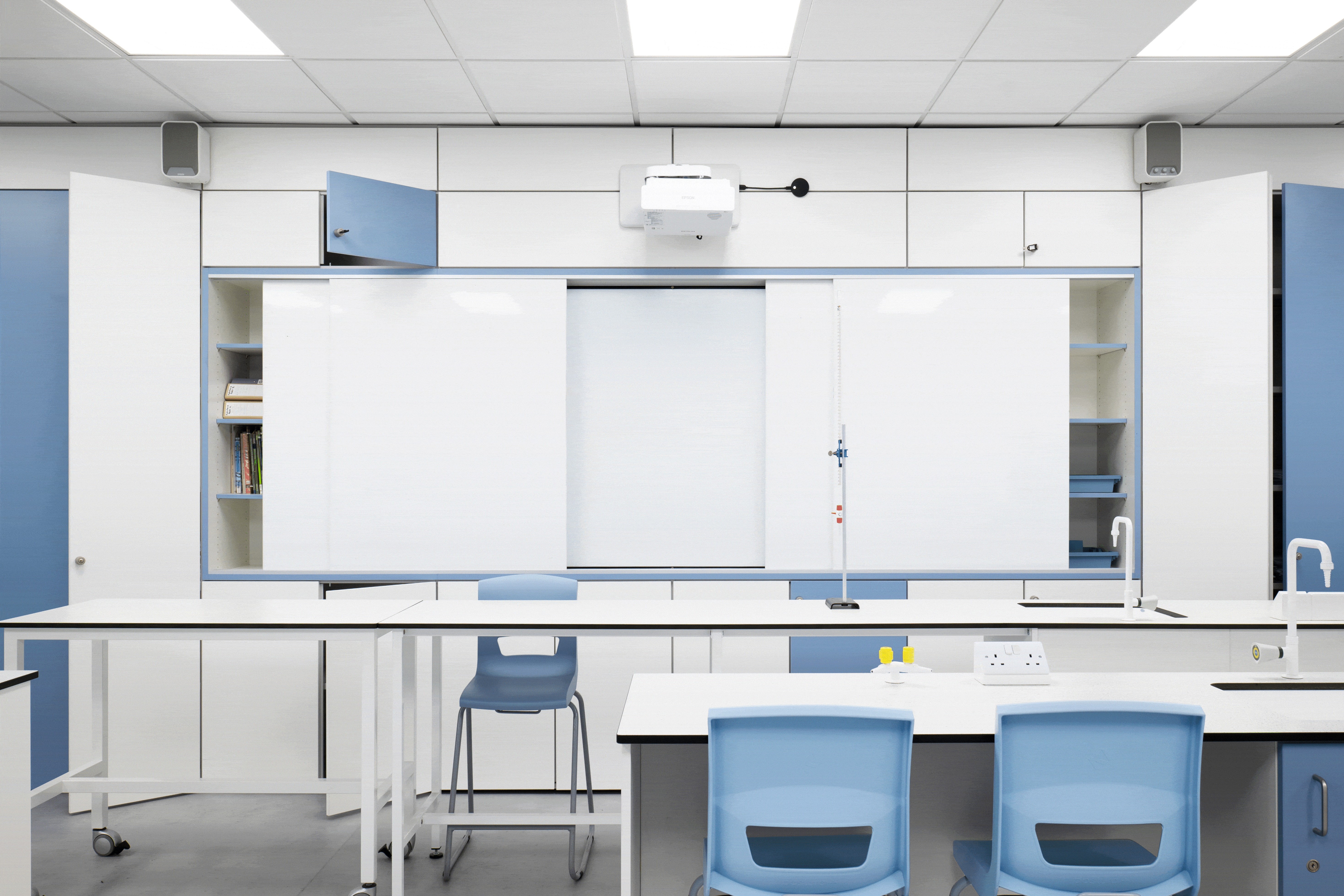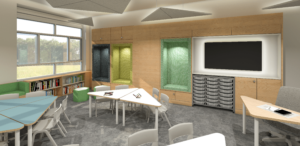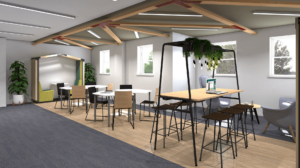There’s more to classrooms than just being a space where students gather to listen to teachers. Design plays a key part in influencing the entire learning process.
According to Owlcation, classrooms can impact everything—from productivity, to student engagement.The same can be said for teachers, too. Previously on Envoplan, we discussed how a creatively-designed room with readily available tools can help teachers feel more confident about their workspace, thus establishing a better learning environment for all. But of course, the benefits don’t end there.
Below, we enumerate more ideas on how classroom design impacts teachers. Add lots of colour and life.
There’s nothing more uninspiring than teaching in a dull-coloured classroom every day. Therefore, it helps to add a couple of colourful elements to the room. Don’t worry, it doesn’t mean you have to re-paint every wall to vibrant pinks and blues. In fact, a neutral wall makes the perfect backdrop for adding bright furniture that can complement it. Education trends researcher Youki Terada also suggests putting up wall displays, since they provide a “lively sense” to the space. Just be sure to free up 20 to 50 percent of the room to avoid unnecessary distractions.
Provide variety to your layout
Typically, the classroom is set up with the teacher in front of the room, while rows of students sit before them. However, have you ever tried experimenting with other layouts? For instance, you can have separate tables in groups of four. This setup is good for schools that do more worksheets than lectures. This way, they can hop group-to-group to ask questions and discuss, instead of having to approach every student while lessening crowding. You can also have the tables arranged in a semi-circle. While this is only good for smaller classrooms, it allows teachers to easily move closer to each of their students. No single layout works for every school, so we encourage you to find the one that is most conducive to teaching for yours.
Incorporate technology
Technology has made learning more engaging for students, and it’s working just as well for teachers. Augmented Reality or AR is one of the top innovations that has been changing the education sector for years. Having iPads and other similar tools for AR apps in the classroom adds an interactive dimension to learning, encouraging teachers to be more creative with their lessons. Technology is a big investment, however. So be sure to remind them to handle the devices properly, and carefully store them when not in use.
Introduce better lighting
Whether it’s building bigger windows or adding more light bulbs, a better lit classroom is a much more invigorating place to teach in. After all, brighter spaces help the mind to stay awake, preventing feelings of drowsiness. If you’re planning to install more lights, just make sure they’re all LED-powered. Some of them are more expensive to buy than your usual incandescent and fluorescent bulbs, but they consume less energy, which saves the school more money in the long run.
Classroom design tips that impact teachers1 4:49 24
April in Education, News and views, School interior design by Rosanna Remmington
5 Likes
Share
There’s more to classrooms than just being a space where students gather to listen to teachers. Design plays a key part in influencing the entire learning process.
According to Owlcation, classrooms can impact everything—from productivity, to student engagement. The same can be said for teachers, too. Previously on Envoplan, we discussed how a creatively-designed room with readily available tools can help teachers feel more confident about their workspace, thus establishing a better learning environment for all. But of course, the benefits don’t end there.Below, we enumerate more ideas on how classroom design impacts teachers.
Add lots of colour and life
There’s nothing more uninspiring than teaching in a dull-coloured classroom every day. Therefore, it helps to add a couple of colourful elements to the room. Don’t worry, it doesn’t mean you have to re-paint every wall to vibrant pinks and blues. In fact, a neutral wall makes the perfect backdrop for adding bright furniture that can complement it. Education trends researcher Youki Terada also suggests putting up wall displays, since they provide a “lively sense” to the space. Just be sure to free up 20 to 50 percent of the room to avoid unnecessary distractions.
Provide variety to your layout
Typically, the classroom is set up with the teacher in front of the room, while rows of students sit before them. However, have you ever tried experimenting with other layouts? For instance, you can have separate tables in groups of four. This setup is good for schools that do more worksheets than lectures. This way, they canhop group-to-group to ask questions and discuss, instead of having to approach every student while lessening crowding. You can also have the tables arranged in a semi-circle. While this is only good for smaller classrooms, it allows teachers to easily move closer to each of their students. No single layout works for every school, so we encourage you to find the one that is most conducive to teaching for yours.
Incorporate technology
Technology has made learning more engaging for students, and it’s working just as well for teachers. Augmented Reality or AR is one of the top innovations that has been changing the education sector for years. Having iPads and other similar tools for AR apps in the classroom adds an interactive dimension to learning, encouraging teachers to be more creative with their lessons. Technology is a big investment, however. So be sure to remind them to handle the devices properly, and carefully store them when not in use.Introduce better lightingWhether it’s building bigger windows or adding more light bulbs, a better lit classroom is a much more invigorating place to teach in. After all, brighter spaces help the mind to stay awake, preventing feelings of drowsiness. If you’re planning to install more lights, just make sure they’re all LED-powered. Some of them are more expensive to buy than your usual incandescent and fluorescent bulbs, but they consume less energy, which saves the school more money in the long run.
Make room for storage
Research on ThoughtCo finds that a cluttered classroom distracts students from learning. And when they’re distracted, the teacher has to call out their attention, throwing them off-track from the lesson plan too. As such, it helps to have proper storage facilities in the classroom. They don’t have to be too big, so long as every student has their own space. As an added security measure, it helps if your storage facilities have proper locks. This way, students and personnel won’t have to worry about potentially losing their things.
Whether it’s because of the presence of colour or the absence of clutter, a well-designed classroom can make the atmosphere more conducive for learning. It’s definitely something every school should be investing in to produce quality education.
Exclusively contributedto envoplan.co.ukContributed by: JBeswickSpeak to one of the Envoplan team to discuss how you can incorporate style and substance in your school setting, keeping your staff and students happy and healthy at all times.



